- About us
- Support the Gallery
- Venue hire
- Publications
- Research library
- Organisation chart
- Employment
- Contact us
- Make a booking
- Onsite programs
- Online programs
- School visit information
- Learning resources
- Little Darlings
- Professional learning
Trukanini, from the Nuennone/Nueonne/Nununi peoples of the southeast region of Lutruwita (Tasmania), is renowned as a prominent leader. Trukanini was the daughter of Mangana of the Leillateah (Recherche Bay) people.
Trukanini experienced the Black War conflicts from 1824, eventually working with invaders as a strategy for survival. Both Trukanini and her husband Wurati navigated the conflicts between the colonial government and their peoples, while maintaining responsibility and pride in their culture. Trukanini, for example, refuted expectations of assimilation, proudly wearing her maireener shell necklace as a marker of women’s culture, the push and pull of the saltwater tide, and as a means of connection to the ocean ecosystems.
This bust of Trukanini by sculptor Benjamin Law, and the bust of Wurati completed in 1835, have been identified as the earliest known sculptures of Australian subjects created by a British colonist. These works, which were produced in multiple iterations to disseminate across the world, testify to the way representations of First Nations people have been exploited and betrayed as part of the colonial project. And yet these proud leaders endure, asserting their identity and defiance.
Collection: National Portrait Gallery
Purchased 2010
A life like sculpture of Tasmanian Palawa leader, Trucaninny, by Benjamin Law, made in 1836. The three dimensional, cast plaster bust is slightly smaller than lifesize. Approx 60 cm high, 40 cm wide and 25 cm deep, Trucaninny’s bust depicts her head and torso and ends, cropped at her upper arm. The bust is painted jet black, which has a low sheen and is mounted on a cast plaster stand, or socle, which is also black. The simple squat cylindrical stand has a curvaceous form – rounded collar, narrower stem and wider base.
Her hair is short with tight curls. Her head is tilted slightly downwards. Her solemn face is broad with strong features. She has a short forehead, strong brow and deep-set eyes. Her gaze is intense. Her prominent cheekbones, either side of her broad nose, give her cheeks a rounded appearance in contrast to the deep-set eyes. She has a full mouth, with an emphasis on the cleft running between her nose and upper lip. She holds her mouth closed, and this, together with her fixed gaze, gives Trucaninny a quiet fortitude. Her square chin is asymmetrical, with an indent slightly left-of-centre.
Around her neck, Trucaninny wears a necklace of tiny conical maireener shells laced together. The necklace lies flat against her skin with the narrow ends of the shells pointing outwards. The long strand is wound around her neck twice, resting on her collarbone and lower in the centre of her chest.
Trucaninny’s shoulders are rolled forwards slightly, matching the downward tilt of her head and the direction of her gaze. From her right shoulder, draped low across her chest and under her left arm she wears an animal skin. The skin, irregular in shape, is twisted around itself, gaping to reveal her right breast and nipple. The drapes and folds show both sides of the animal skin – the thick furred texture in contrast with the smooth underside. A triangle of fur hangs long over her right breast and past the end of the bust.
Audio description written by Emily Casey and voiced by Carol Wellman Kelly



On one level The Companion talks about the most famous and frontline Australians, but on another it tells us about ourselves.
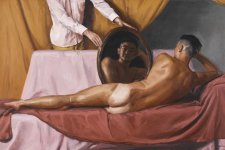
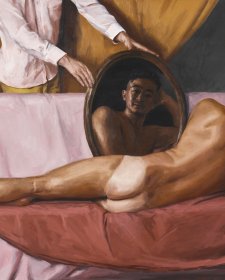
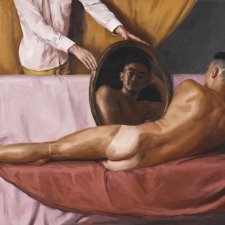
Preserving stories, subverting power and posing nude: Benjamin Law explores the potency and persuasiveness of portraiture.
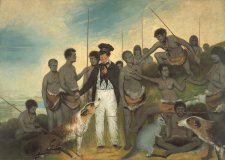
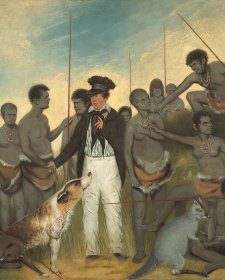
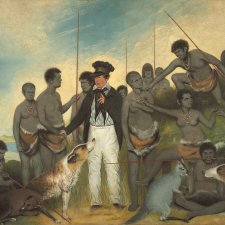
Gareth Knapman explores the politics and opportunism behind the portraits of Tasmania’s Black War.